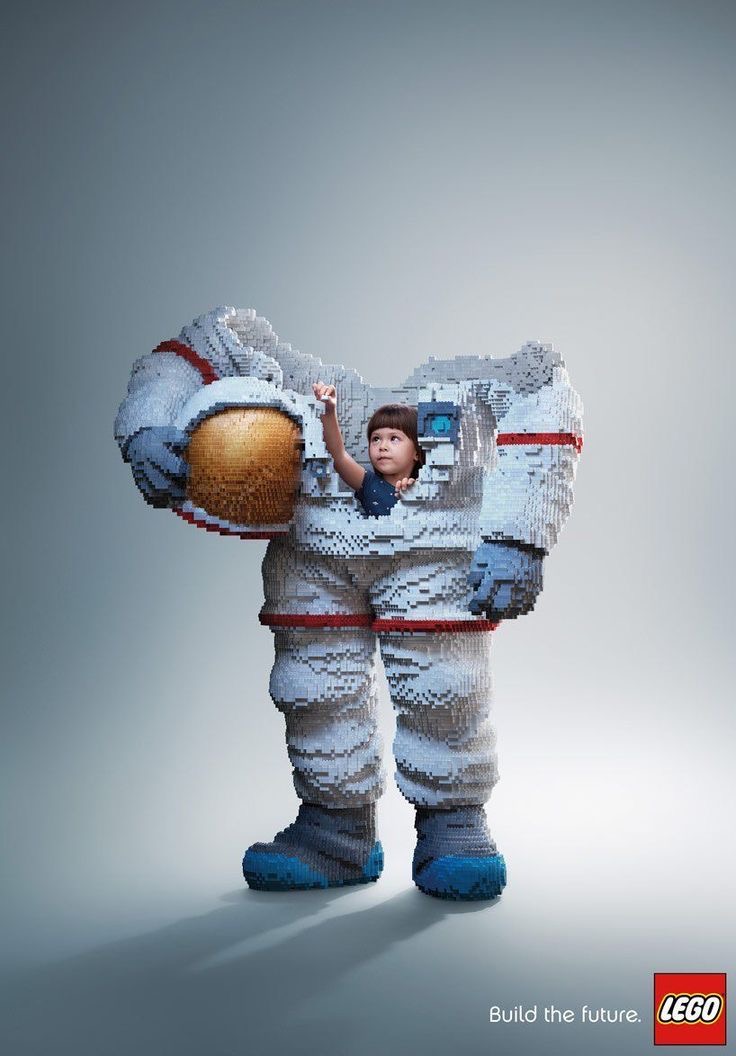Prehistory, a time before humans acquired the ability to record the times in writing, it was all visual. History was shown through a variety of types of art. Scuplting, for example, served as a visual representation of humans past doings. But a sculpture isn’t just a sculpture. It’s an entrancing piece of art that entices you to ask more questions and feel a variety of different emotions. It asks more than it shows.
A Somewhat Modern-Day Example
In modern times, humans have enhanced visual images with writing. Referring to the cover image of this post, putting it in the blandest way, the picture shows a little boy building an astronaut suit out of Legos. You would think what astonishing creations you can make out of Legos, but your mind would effortlessly take you further.
That isn’t the only message this LEGO ad is trying to convey. When it appeared on my Pinterest home page, it immediately peaked my interest. Is it because I am an avid LEGO movie lover? Maybe… or maybe not? In this case, no, it got my attention because it conveyed the message of childhood hope. Hope that one day you can, in the real world, build yourself up to whatever you want to be in life.
Even if you were to take away “Build the Future” from the bottom right corner. I’m certain the thought process would be similar.
The makers wanted you to feel these feelings, not SOLEY for your own personal pleasure. They wanted to persuade you into ultimately driving to Target and spending sixty plus dollars on a Lego set.
Moving On…
Eyman discusses how many the difficulty of establishing a singular definition for what visual rhetoric is. In a direct quote from “Defining Visual Rhetorics” Charles Hill and Marguerite Helmers (2004), they state:
To some, studying the “visual” seemed to con- sist solely of analyzing representational images, while to others, it could include the study of the visual aspect of pretty much anything created by human hands—a building, a toaster, a written document, an article of clothing—making the study of “visual rhetoric” overlap greatly with the study of design.
Charles Hill and Marguerite Helmers (2004)
I have to say I agree with visual representing anything created with “human hands”. If you really think about it, everything represents something deeper. Even if it’s not a singular message between people. Last week, when we looked at the World Trade Center building, as a class we decided it was the U.S. sending a depthful message to the world. Come on, the building is 1776 feet tall!
It is basic human instinct; We see, we think, and we ponder. It’s never ending and all around us, the world has us all under wraps.





Leave a Reply